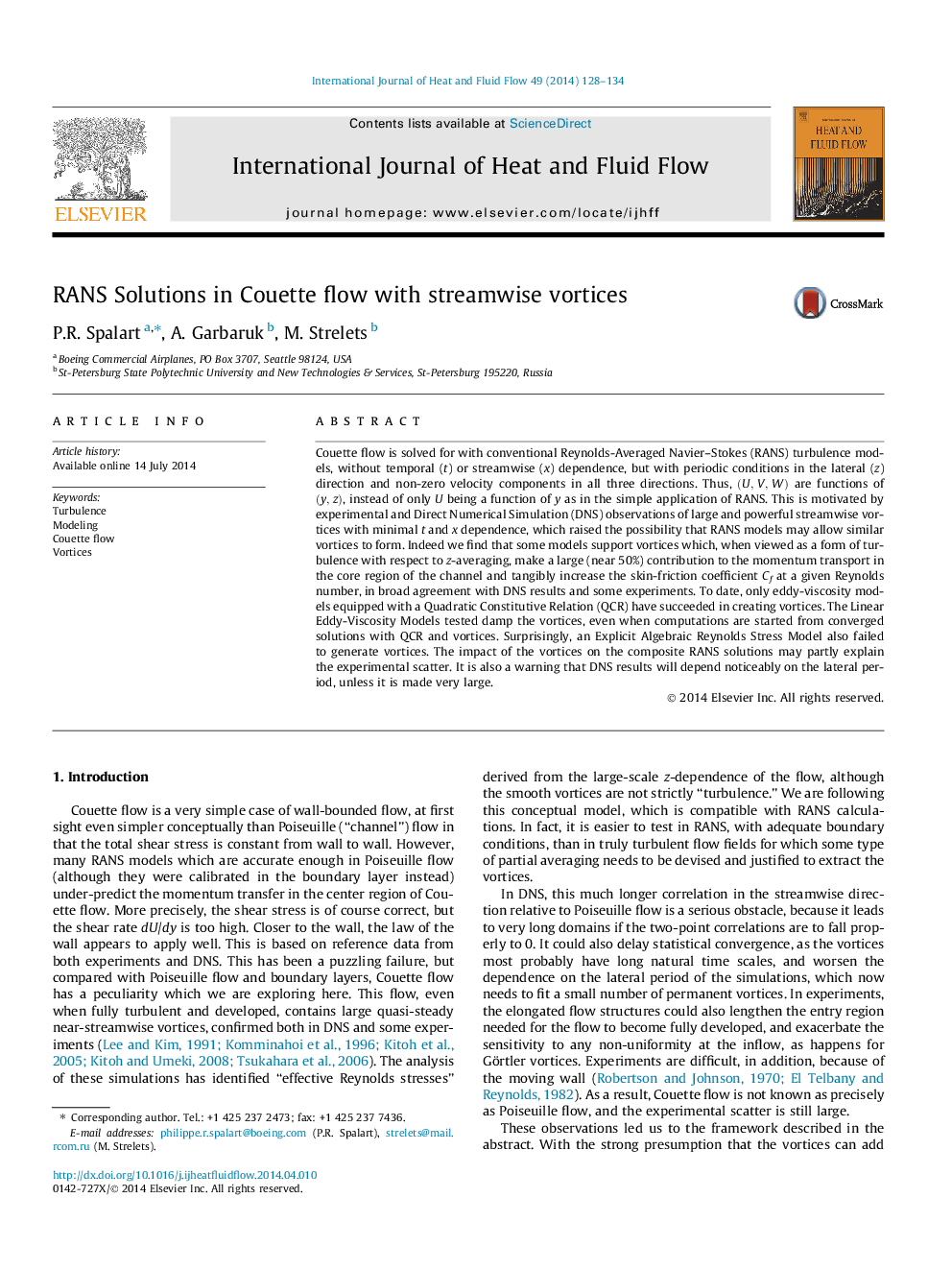| Article ID | Journal | Published Year | Pages | File Type |
|---|---|---|---|---|
| 655243 | International Journal of Heat and Fluid Flow | 2014 | 7 Pages |
Abstract
Couette flow is solved for with conventional Reynolds-Averaged Navier-Stokes (RANS) turbulence models, without temporal (t) or streamwise (x) dependence, but with periodic conditions in the lateral (z) direction and non-zero velocity components in all three directions. Thus, (U,V,W) are functions of (y,z), instead of only U being a function of y as in the simple application of RANS. This is motivated by experimental and Direct Numerical Simulation (DNS) observations of large and powerful streamwise vortices with minimal t and x dependence, which raised the possibility that RANS models may allow similar vortices to form. Indeed we find that some models support vortices which, when viewed as a form of turbulence with respect to z-averaging, make a large (near 50%) contribution to the momentum transport in the core region of the channel and tangibly increase the skin-friction coefficient Cf at a given Reynolds number, in broad agreement with DNS results and some experiments. To date, only eddy-viscosity models equipped with a Quadratic Constitutive Relation (QCR) have succeeded in creating vortices. The Linear Eddy-Viscosity Models tested damp the vortices, even when computations are started from converged solutions with QCR and vortices. Surprisingly, an Explicit Algebraic Reynolds Stress Model also failed to generate vortices. The impact of the vortices on the composite RANS solutions may partly explain the experimental scatter. It is also a warning that DNS results will depend noticeably on the lateral period, unless it is made very large.
Related Topics
Physical Sciences and Engineering
Chemical Engineering
Fluid Flow and Transfer Processes
Authors
P.R. Spalart, A. Garbaruk, M. Strelets,
